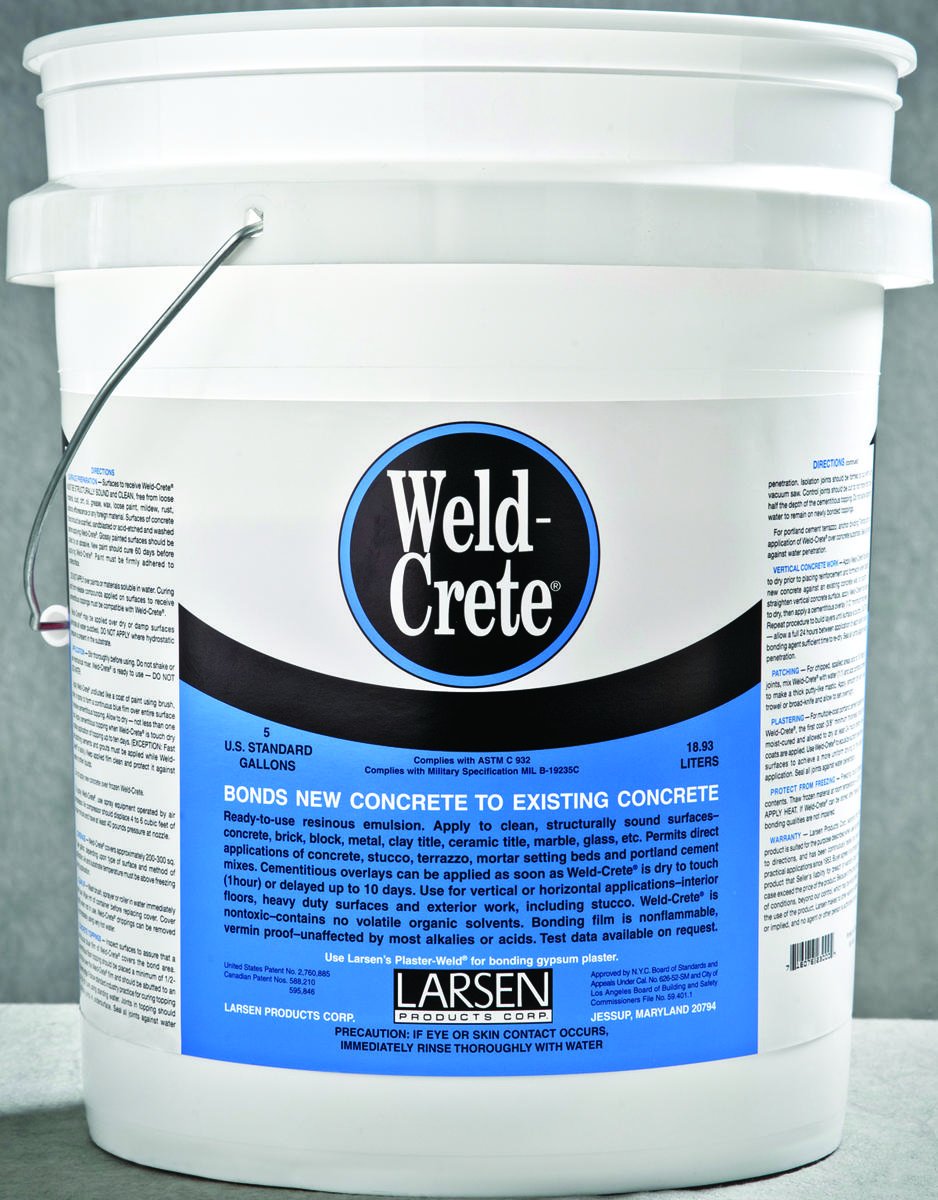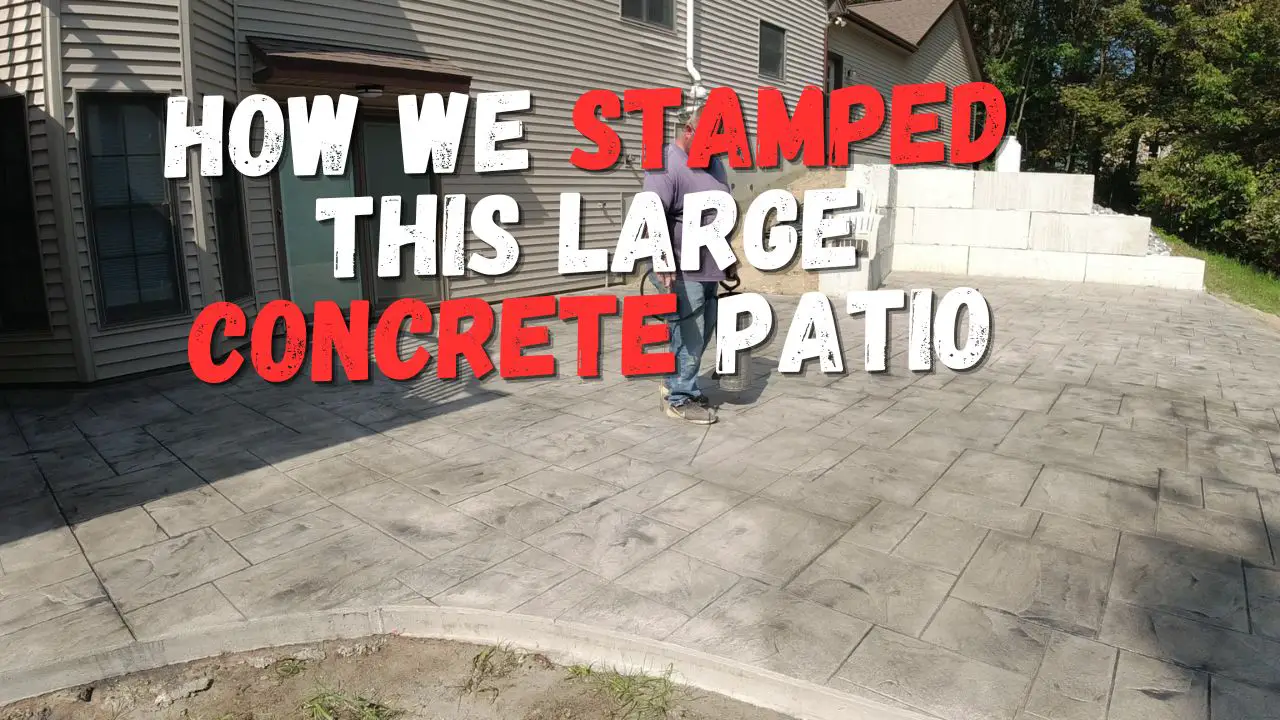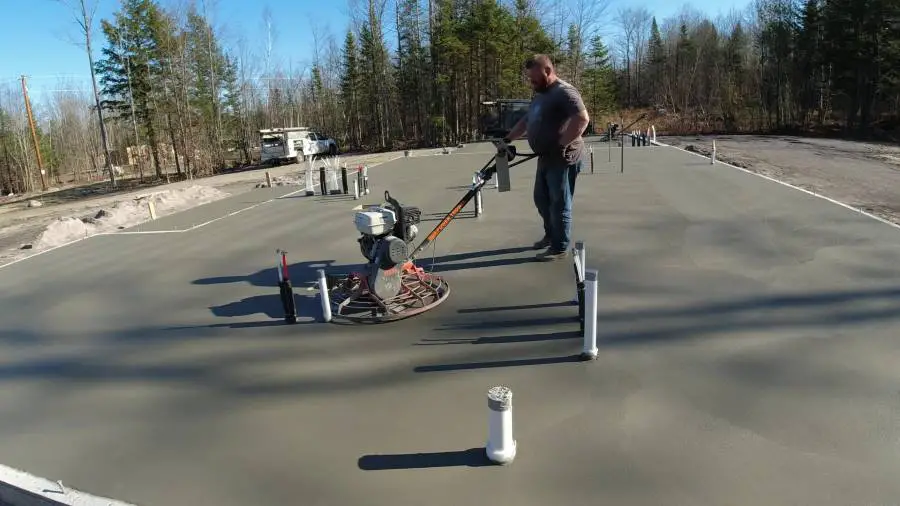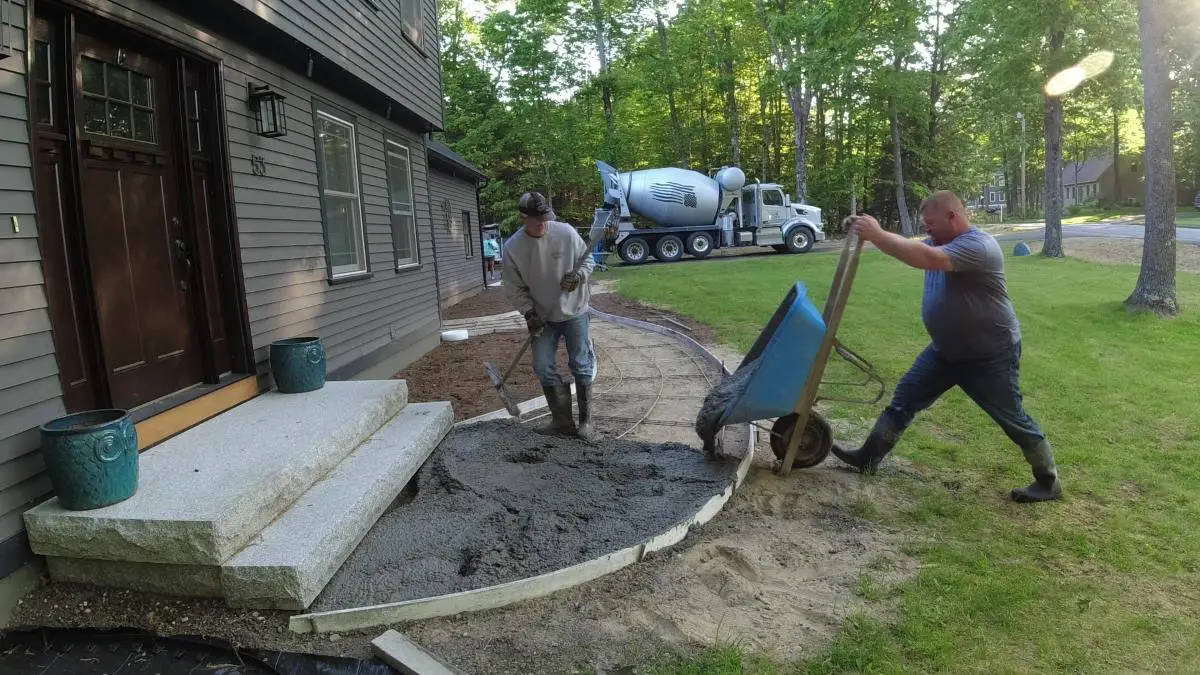Can You Pour Concrete Over Concrete?
In most cases the answer is YES! If the existing concrete is structurally sound, and not heaving or settling.
My rule of thumb is this:
- If the new concrete is 3 inches thick or more - you don't have to bond the new concrete to the old concrete.
- If the new concrete is less than 3 inches thick - you will want to use a bonding agent to bond the new concrete to the old concrete.
- Make sure the old concrete is clean. You can power wash it or vacuum it.
- Pour your new concrete just like you would if it was a hard compacted gravel base.
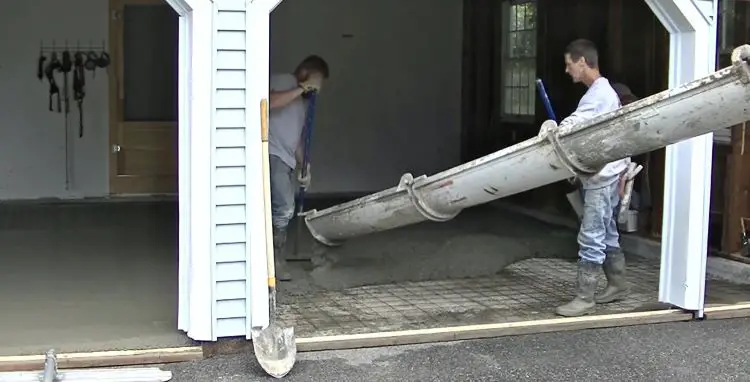
My name is Mike Day, I own Day's Concrete Floors, Inc. I've owned my own concrete business for 39 years. I specialize in all aspects of concrete flat work.
In the picture above, we're pouring concrete over concrete.
The old garage floor was very worn and pitted on the surface. You could see the aggregate in many places.
Some of the concrete had deteriorated up to a half inch deep.
The old concrete floor also sloped towards the back wall, right where you see us in the picture, so water would puddle back there whenever it rained or when water dripped off the cars.
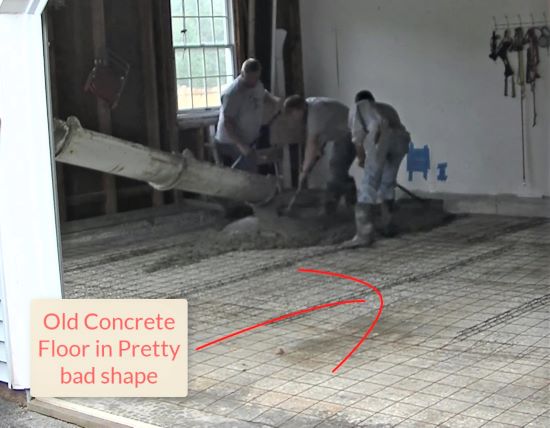 We're pouring a new concrete floor over an old concrete floor.
We're pouring a new concrete floor over an old concrete floor.After taking a close look at the old floor, It was clear there was no settling, heaving or large cracks.
The old floor was structurally intact, but very rough on the surface and tipped the wrong way.
The homeowner didn't want to break it up, remove it, and haul it away. He just wanted a smoother surface that was easier to clean and would shed water out the doors.
The only problem with raising the height of the floor was it changed the height of the garage door openings.
The solution was a new set of garage doors for him (the others were very old anyway) and installed at the correct height so they would shut tightly on top and bottom.
If you don't need new garage doors, just raise the height of the tracks by the height of your new floor and they'll work properly.
In the video below, you can watch us pour this new concrete floor right over the old one.
What's the minimum concrete thickness over existing concrete?
The minimum thickness for pouring concrete over concrete is 1.5 inches.
In most cases, I don't like to pouring the new concrete less than 2 inches thick.
Two inches of concrete (or more) that's bonded, gives you adequate strength for a wear surface, especially if you're driving over it.
It's possible to pour 1.5 inches thick with a pea stone mix, but I don't really recommend pouring that thin.
If that's all the height you can afford to lose, it'll work but you may develop more shrinkage cracking than normal because of it being so thin.
One solution for that is to saw cut some extra expansion joints to help minimize any shrinkage cracks.
And remember, if you're new concrete pour is less than 3 inches thick, you will want to BOND the new concrete to the old concrete using a bonding agent.
How do you bond the new concrete to the old concrete?
The bonding agent I use is called WELD-CRETE.
This stuff is very easy to use and is designed to bond new concrete to old.
You just paint it on using a roller or a scrub brush. Let it dry, it takes about an hour or two, the pour right over it
When you pour your new concrete over Weld Crete, it activates it and bonds the new concrete to the old.
If you don't use a bonding agent like Weld-Crete, there's no guarantee the new concrete will stick to the old concrete.
When wouldn't I want to pour new concrete over old concrete.
There are cases when pouring new concrete over old just isn't a viable solution.
If you're concrete has large cracks it might still be moving due to freeze and thaw conditions or settling. In that case, a tear out and replace with new is a better solution.
If tree roots are causing your concrete to crack, then tear out the old concrete, resolve the tree roots problem, and pour new concrete.
If you have door thresholds or stair risers you can't adjust to the new floor height, then pouring new concrete may cause some other problems you'd have to fix.
What if my old concrete has a lot of cracks in it?
If you're existing concrete has a lot of cracks, but is structurally sound, and it's not moving, heaving, or settling, then it's ok to pour new concrete over it.
I recommend pouring the new concrete at least 3 inches thick and installing a bond breaker between the old slab and the new one so the cracks won't transfer up through the new concrete.
Some of the things we use as bond breakers are:
- Plastic sheeting
- Typar house wrap
- Roofing felt paper (tar paper)
- Thin layer of sand
- Thin layer of crushed stone
- Thin layer of styrofoam
Using a bond breaker will keep the two slabs of concrete separate and the cracks will be much less likely to mirror up through the new slab.
You'll still need to saw cut or groove expansion joints in the new slab to help control shrinkage cracks, just like you would any new concrete pour.
The thinner the new over-pour, the closer the expansion joints should be.
How close should they be?
- For 4" thick slabs 8' x 10' squares
- For 3" thick slabs 6' x 8' squares
That's just a general rule of thumb to give you an idea of how close your crack control joints should be. You're trying to minimize any new cracks from developing in your new floor.
how to pour concrete over concrete
After you've determined you can pour new concrete over your old concrete, here's how you prepare your old concrete.
- Clean the old concrete First - pressure wash it, vacuum it, remove any dirt, debris, or loose concrete.
- If you're new concrete is under 3" thick, apply Weld-Crete, let it dry at least 1 hour, then you're ready to pour your new concrete.
- If you're new concrete is 3 inches thick or more and your old concrete isn't all cracked up, then you're ready to pour your new concrete.
- If you're old concrete is cracked up, install your bond breaker (for really wide cracks I recommend sand or 1/2" styrofoam), then you're ready to pour.
- If you're old concrete is very smooth and you're using Weld-Crete, you will want to acid-etch the old slab before applying Weld-Crete.
- If you have door openings or open edges, you will have to install wood forms to keep the new concrete from flowing over the edge.
- Pour and finish your concrete as you would if you were doing it over hard compacted gravel.
If you watch my video above, you'll see how we installed forms for the garage door openings to stop the new concrete.
Should I use reinforcement in my new concrete?
YES, you should use some kind of reinforcement in your new concrete pour.
For all my over-pours, I use fiber mesh reinforcement in the concrete. This type of reinforcement is made of tiny polypropylene fibers that get mixed into the concrete when the concrete is batched into the concrete truck.
Also, like in the video, I use wire mesh if the new pour is thick enough to allow for it.
Sometimes I'll use rebar instead of wire mesh if the new pour is thick enough it'll have heavy vehicle traffic driven on it.
But the bottom line is YES, use some type of reinforcement in your new concrete to help control any cracks that may develop and keep them from spreading.
In summery:
In most cases it's OK to pour new concrete over existing concrete.
Use my above recommendations and on-the-job experiences as a guideline to determine if your concrete is a good candidate or not.
I've personally poured hundreds of new concrete floors, slabs, and patios, over existing concrete that was rough, cracked, pitted or sloped the wrong way.
If you have a question about your project, watch the video on YouTube and leave me a question in the comments section. I'll try to help you any way I can.
Mike Day
